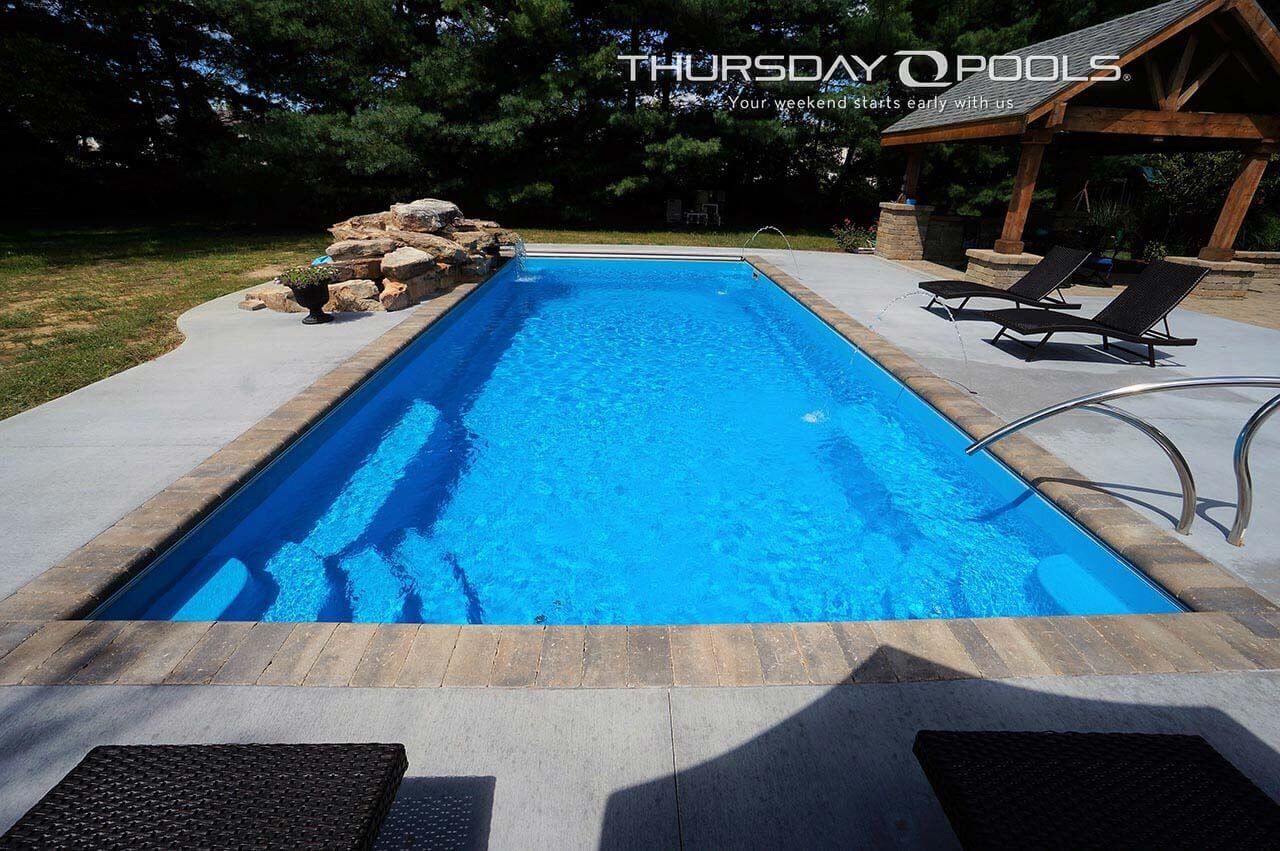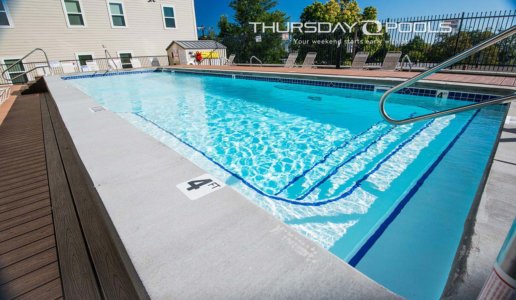 Dear General-
Dear General-
We’re relatively new inground pool owners. We’ve enjoyed reading your articles about common pool maintenance problems to avoid, new pool owner FAQs, tips and tricks to save money and keep our pool running at its best, like the importance of backwashing and how to care for our pool over the winter. There’s quite a lot to learn! We’ve still managed to make some rookie mistakes though. Your post about overflowing your own pool made us feel much better, so thanks for that! However, we are curious what the Thursday Pools warranty policy is. Also, do you have any other stories to share that will help us feel better about being swimming pool novices? We could use a chuckle today.
Signed-
Embarrassed in Elmore
Dear Embarrassed–
Believe me, you have absolutely no reason to feel badly. We all do the best we can, and some lessons are just learned the hard way. However, since you’ve asked for a chuckle today, I’m happy to oblige. I do have a few stories up my sleeve from my years in the fiberglass pool biz.
We all have been told at one time or another by friends, teachers, and parents that there are no silly questions, just silly answers. In some circumstances, I believe there are both. To say a question or an answer is silly, can be embarrassing, and hurtful to whoever said it or asked it. Most of the time, we are not instructed completely, or the terminology used is completely foreign to us. I personally have that problem when talking to my grandson about computers. He is talking RAM, operating systems, and a whole myriad things that I have no idea what he is explaining to me.
Unfortunately, sometimes we just don’t completely communicate things we are familiar with to those who don’t. I also sometimes mistakenly think that new customers understand how things work. These are some of the things that people actually do that are our fault for not being specific when giving advice. On the other hand, people say and do some pretty funny things. Here are a few of my favorites:
SIMPLY SHOCKING.
I once had a new homeowner call me with a water problem. He said the water just didn’t sparkle and looked a little cloudy. I asked when the water had last been tested. He said they’d gone to the pool shop and were told to put some bags of shock into the pool. They did that, and it didn’t help. They were then advised to put two more bags in, but the water didn’t improve. I stopped by to troubleshoot thinking that there may be an issue with their filtration equipment. What did I find? The bags of shock laying on the bottom of the pool unopened. We fished them out with their dip net, OPENED THEM and poured the chemicals into the water. The customers’ response was, “We wondered how long it would take for those bags to dissolve!”
RECYCLING IS NOT ALWAYS A GOOD THING.
One customer was determined to save on water costs. So, he decided to put the backwash hose into the pool when he was backwashing to save water. Guess what? When you’re using the same hose to pull dirt of the pool that you would use to put water into the pool, you’re going to PUT DIRTY WATER IN YOUR POOL.
SERIOUSLY BLUE.
Another customer loved the idea of having beautiful blue water when he looked out his window. He did not seem to understand that the beautiful blue color in a fiberglass pool comes from the color of the pool’s walls–not the water itself. He asked me if he could add blue food coloring to his water to achieve this effect. I said, “Well, unless you want your entire family to look like Smurf’s, I would not recommend it.”
NO “FEESHES” ALLOWED.
Once, while I was traveling, we stayed at a motel with a pool. They had a sign posted at the pool that warned, “Do not put fish in the pool.” Confused by this, I asked the maintenance guy if they were having trouble with people putting fish in the water. And he said “no,” but someone told him that the health department would shut down the pool if they found fish in it. He didn’t know why. I asked, “Is it possible they said feces, not fish?” And he said, “Oh yeah. That makes a lot more sense.”
OVERINFLATED.
One customer called me, very upset because he was having trouble with the tubes for his winter cover. Even though he had filled them, they were not holding his cover in place and were not inflating properly. (The word “inflating” was my first clue to his troubles.) After a minute or two on the phone, I realized he was trying to fill the WATER tubes with AIR. His reply was, “Well, I inflated every other darn thing my wife bought all summer–I figured I needed to inflate those too!”
LANDSCAPING THE POOL.
 I got a call for a renovation bid from a gentleman who had bought a house with an existing pool. He let me know that the pool wasn’t working properly and wanted an estimate to get it black into swimming shape. I asked him if he could send a photo of the pool. When I saw the photo, my answer to his request for an estimate was, “A lot.”
I got a call for a renovation bid from a gentleman who had bought a house with an existing pool. He let me know that the pool wasn’t working properly and wanted an estimate to get it black into swimming shape. I asked him if he could send a photo of the pool. When I saw the photo, my answer to his request for an estimate was, “A lot.”
Maybe when someone told the previous owner to landscape his pool, he didn’t understand that they meant AROUND the pool, not IN IT. It might have been time for the guy to get a new pool. So, the next time you’re worried that you’re not doing a good job with your pool maintenance, take a look at this picture, and I’m sure you’ll feel better right away.
Thanks for asking. I enjoyed this topic, and trust me, I can and will share more in the future.



 Regardless of your pool type, maintaining the correct water level is a key aspect of pool care, ensuring a longer lifespan for the pool structure, preventing damage, and providing a safer and more enjoyable swimming environment.
Regardless of your pool type, maintaining the correct water level is a key aspect of pool care, ensuring a longer lifespan for the pool structure, preventing damage, and providing a safer and more enjoyable swimming environment.
 As the air gets crisp, the leaves begin to fall, and stores start stocking Christmas decorations alongside Halloween candy, it’s impossible to ignore the signals that winter is just around the corner. For pool owners, this seasonal shift prompts an important question: when is the right time to start winter
As the air gets crisp, the leaves begin to fall, and stores start stocking Christmas decorations alongside Halloween candy, it’s impossible to ignore the signals that winter is just around the corner. For pool owners, this seasonal shift prompts an important question: when is the right time to start winter 
 This too, shall pass. For those of us who live for the juxtaposition of the warm sun and luxurious cool pool water while living in a state with four seasons, waiting out the winter is a necessary evil. And making sure you are ready to enjoy your pool as soon as possible means closing your pool properly for the winter. If you live in a state with a freeze/thaw cycle, you may be wondering, “What does a pool closing include?” Some questions to consider when learning how to close a pool for winter may include:
This too, shall pass. For those of us who live for the juxtaposition of the warm sun and luxurious cool pool water while living in a state with four seasons, waiting out the winter is a necessary evil. And making sure you are ready to enjoy your pool as soon as possible means closing your pool properly for the winter. If you live in a state with a freeze/thaw cycle, you may be wondering, “What does a pool closing include?” Some questions to consider when learning how to close a pool for winter may include:
 The greatest joys of owning a swimming pool include the hours of relaxation and swimming in crystal clear water. Proper water chemistry, regular cleaning and systems
The greatest joys of owning a swimming pool include the hours of relaxation and swimming in crystal clear water. Proper water chemistry, regular cleaning and systems 





 Dear General;
Dear General;